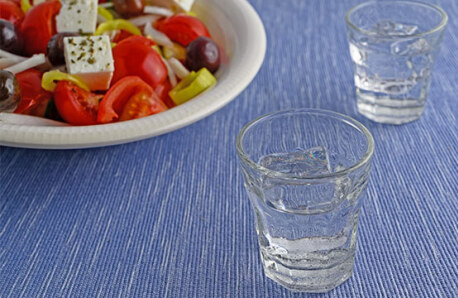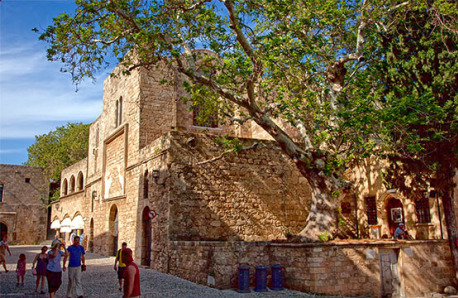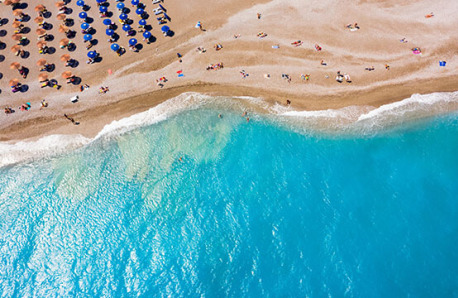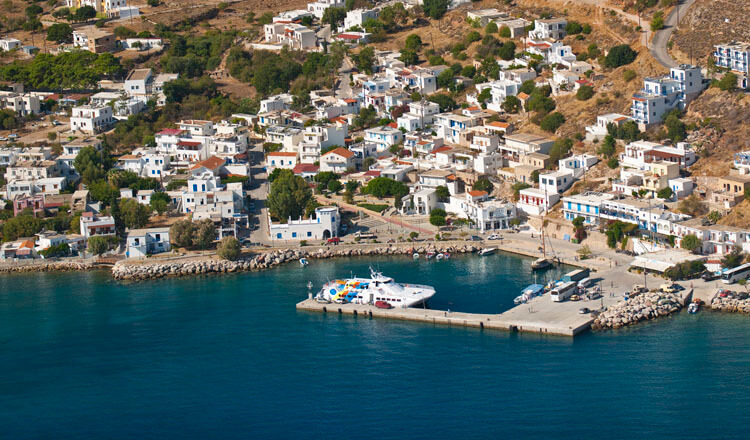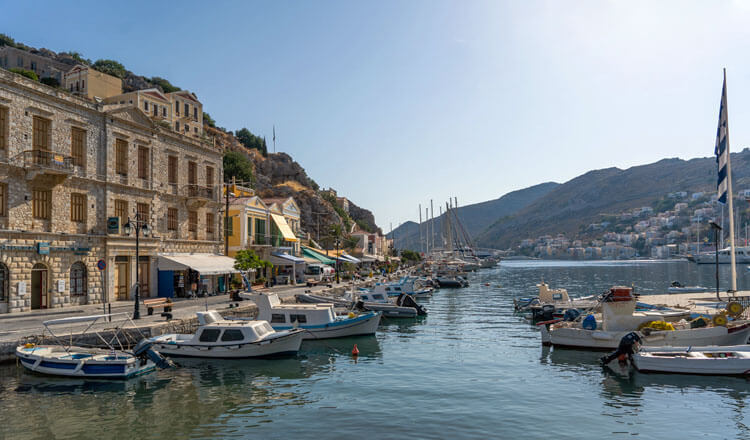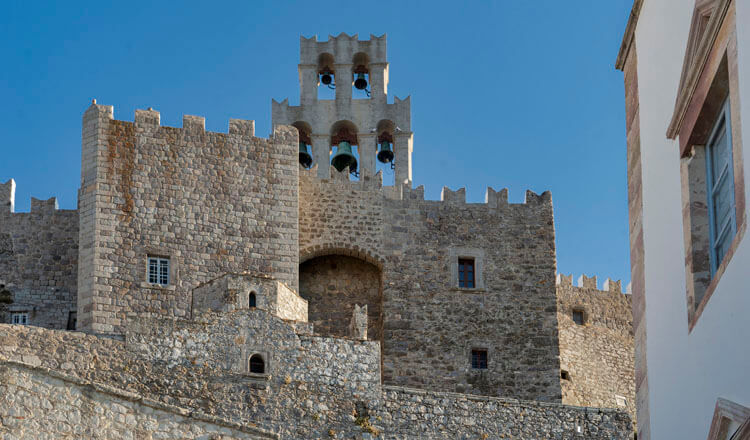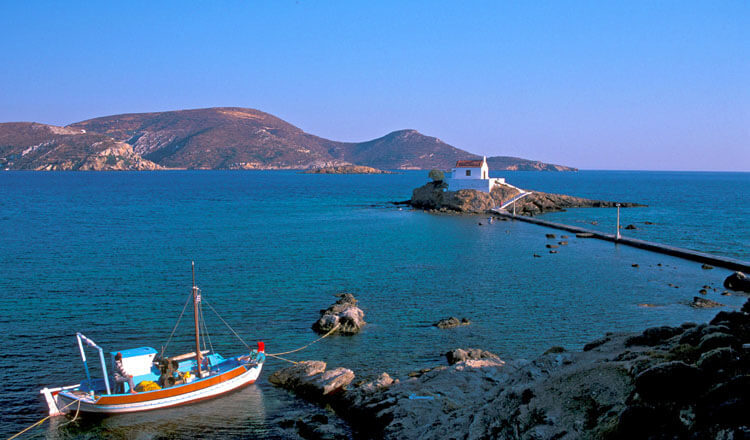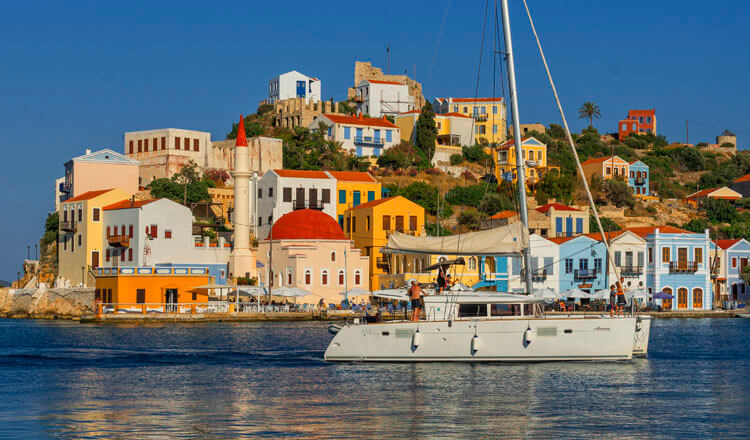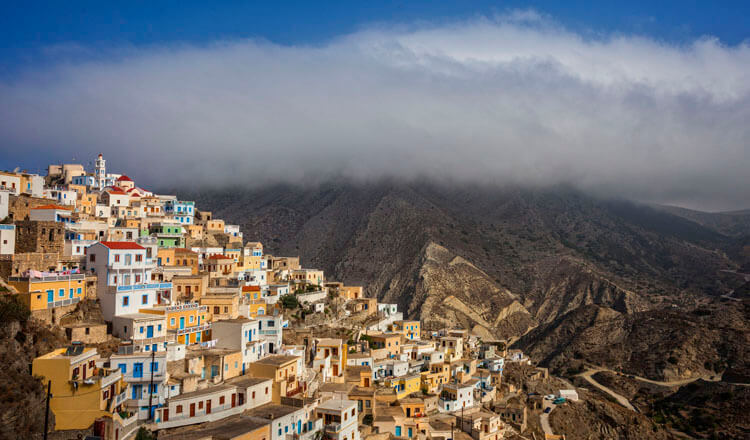

Rhodes
Next 5 days
-
WED
14 °C
-
THURS
13 °C
-
FRI
12 °C
-
SAT
10 °C
-
SUN
9 °C
Climatic Data
Source: National Observatory of Athens /meteo.gr
Tour the island
There is something special about the island’s capital: its mediaeval and modern character have blended to create one of the most beautiful towns of the world. It was founded in 408 BC and it consists of the fortified mediaeval (old) town, and the new town which includes older, neoclassical and modern buildings. The mediaeval town has been inscribed on UNESCO’s World Heritage Sites list and it was built in a semicircle around the main harbour. Stroll about its picturesque alleys and along the renowned Street of the Knights, which was restored to the exact shape and size it had in the Middle Ages. At the time, the houses of members of the Order of the Knights of St. John used to line the street.
Visit Castello, the 14th c. Palace of the Grand Master, which is one of the first edifices built by the knights in the old town. See also the imposing Clock Tower, built by Fehti Pasha in 1857, which offers wonderful views to the old town. Visit also the Archaeological Museum and the Byzantine Museum, each housed at the former Hospital of the Knights, and at Panagia tis Nikis Church, respectively. You will admire the impressive finds and heritage items which bear proof to the island’s rich history.
Outside the city walls lies the new town, with some really impressive buildings dating to the period of Italian Rule on the island, such as Nomarchia (bearing a strong resemblance to the Doge’s Palace in Venice) - today the South Aegean Region’s Office, the Post Office, the Town Hall, the National Theatre, and the Church of the Annunciation.
Go for a walk in Mandraki, the small harbour graced by two statues of deer; see also the nearby marina, the Windmills, and St. Nicholas’ Lighthouse. Visit the Aquarium at the city’s northernmost tip; the interior has been shaped like an underwater cave and you’ll see marine species endemic to the Aegean Sea. In the south side of the town, Rodini is an amazing park where peacocks live; stroll along the paths that wind their way past pine & cypress trees, and streams. Rodini is reputed to have been the location of the ancient School of Rhetoric of Rhodes, where renowned personalities received their education, such as Julius Caesar and Cicero. See also the ancient stadium, the Odeum, and the temple of Pythios Apollo, on Agios Stefanos Hill (a.k.a. Monte Smith or the acropolis of ancient Rhodes).
Northern Rhodes
Take a trip to Kallithea, a beautiful area in the north and visit Koskinou, a listed traditional village with colourful houses, decorated with ceramic plates and hand-woven fabrics, after the local style. See also the bathhouses in Kallithea. The domed building of the local hot springs is called Rotonta, and it has been known since ancient times for the healing properties of the red water which rose out of the ground. These hot springs were exploited by the Italians in 1929. The area is known for the popular beaches of Faliraki & Kallithea, little coves such as Ladiko (where the Guns of Navarone were filmed in 1961) and the beach named after famous actor Anthony Quinn.
Ialysos area (a.k.a. Trianta) boasts cosmopolitan resorts with 5-star hotels and an intense nightlife. Ancient Ialysos is the homeland of Diagoras, an Olympic Games winner, and one of the three powerful cities of ancient Rhodes, the other two being Lindos and Kameiros. Make sure you take a stroll along the busy Ialysos Avenue which is lined with neoclassical stately buildings (called ‘towers’) which were used as summer residences for the wealthy islanders. Tour the archaeological site of the Ialysos acropolis on Filerimos Hill; you’ll see impressive monuments such as the temple of Athena Polias, the Doric Fountain, a church dating to the period of the Knights of St. John, and the chapel of Agios Georgios Chostos. Visit also the impressive monastery of Panagia Filerimos; see the stone-paved courtyard and the 15th c. stone-built Gothic-style church, as well as the Way to Calvary, lined with cypress trees and stone columns decorated with scenes from the Passion of Christ. At the end of the path, there is a big cross. Have a swim in the deep blue waters of Ialysos beach. The summer winds blowing over the area make this location ideal for water sports, such as windsurfing and kitesurfing. If you are on the island in August, don’t miss out on watching the annual cultural festival which takes place in the area.
Afantou is a village built according to the typical island architecture; among the assets of the area is a beautiful beach, and a well-maintained golf course which is open all year round. Kolympia is a nearby seaside resort and the popular Efkalipton [Eucalyptus] Street is a beautiful street (and promenade) lined with tall shady eucalyptus trees - hence the name, given by the Italians who ruled the island until the end of World War II.
The renowned Valley of the Butterflies is a must-visit area located near Theologos village. The valley is the habitat for butterflies of the genus Panaxia quadripunctaria and it will be a memorable experience for you to visit this beautiful green area sometime from June until September: you will enjoy the amazing views of millions of butterflies which appear at that time. Make sure you also visit the nearby small museum of Natural History.
Archangelos is a quite large inland town. At the foot of the castle around the Archangel Michael church, you will see the traditional part of the town with colourful old houses; locals uphold their traditions and calm way of life, keeping their distance from the fast pace of tourism growth. Visit the castle built by the Knights of the Order of St. John in 1320, and the church of the Archangel Michael, you will be impressed by its pebble-paved courtyard. See also Ano or Nea Moni [Monastery] of Panagia Tsampika and go to the namesake beach. Take a trip to Koumelos cave, and Malonas village which is located inside the largest orange grove of Rhodes. Beneath huge shady pine and plane trees you will find the Seven Springs [Epta Piges], a landscape that is a sample of the lovely countryside you will see on Rhodes Island.
Kameiros used to be one of the three ancient cities of Rhodes, and its ruins lie in an open-air archaeological site surrounded by vegetation. Visit traditional villages in the vicinity, such as Soroni (and its beach), and Salakos, whose surrounding forested area and springwaters make it an ideal destination for nature-lovers. From this location you can climb Mt. Profitis Ilias, the second highest mountain of Rhodes, and see the country chapel of Prophet Elijah on the top. You will pass by traditional hamlets on the mountainsides where tall plane trees thrive and springwaters flow by them.
Attavyros is Rhodes’ highest mountain, with a verdant foot and a rocky top, dominating the surrounding countryside which is dotted with semi-mountainous villages. The climbing fans will enjoy reaching the top where they will be rewarded with a fantastic panoramic view of the entire island. Emponas is the biggest village in the area, surrounded by vineyards on the mountainside. It is well-known for its excellent wine and its traditional character. You will enjoy the sunset on one of the area’s imposing castles, such as Monolithos, built in the 14th c. by the Knights of St. John, and the castle of Kritinia. The region’s rocky shores hide beautiful coves, such as Fournoi, Glyfada and Kritinia, where you will be able to enjoy the sea and the sun, in secluded spots.
Ancient Lindos used to be a rich and powerful city-state, and its imposing acropolis perched on a high rock bears proof to its past glamour. Visitors to nearby modern day Lindos will be impressed by the view of the village stretched along the foot of the rock. It consists of traditional white houses, stately buildings, churches and cobblestone alleys. Follow the path that crosses the village and you will reach the ancient acropolis; the area includes the remaining city walls and other ruins dating to the ancient and Byzantine times, as well as to the period that St. John’s Knights ruled the island. The location affords amazing views to the open sea. Lindos is a popular destination for beach-goers; you can enjoy swimming in the deep blue waters or practise your favourite water sports.
Southern Rhodes
Nature is at its best in the south part of the island: long beaches stretch from Kiotari and Gennadi to Lachania, Plimmyri, and Prasonisi (a favourite location among windsurfing and kitesurfing fans). Here, the pace of life is different from that in the city and the popular tourist resorts. The inland areas consist of fields, forests, low hills, and valleys that wear a variety of colours and offer beautiful soothing views of natural scenery. The centuries-old villages are mostly rural and they keep to their traditional style & local dialect, and their houses are decorated in the traditional Rhodian way.
Don’t miss out on taking a day trip to the nearby islands of Symi, Chalki, Kastellorizo and Tilos. In the summer months, there are daily boat trips from the city of Rhodes.
Filming in Rhodes
FILMING IN GREECELocal Dishes
VIEW ALL
Pitaroudia
Tips for your Next Trip
VIEW ALL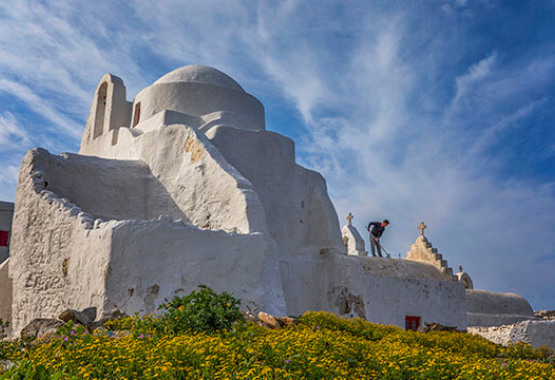
Greek Travel Blossoms
Fantastic weather, landscapes bright with wildflowers, and a host of brilliant opportunities to experience traditional celebrations, unique customs, and delicious feasts. Springtime is an ideal season to enjoy a Greek holiday or city break.
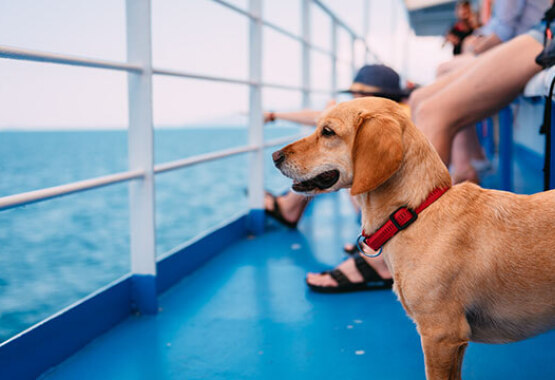
Essentials of Travelling to Greece with your Pet
Exploring Greece with your pet can be an enriching experience filled with new sights and adventures. It's essential to be prepared with your pet's documentation and to research the specific requirements before jetting off to Greece with your furry friend. Here's what you need to know and must have, to make your trip from your hometown to the Greek wonderland smooth and enjoyable.
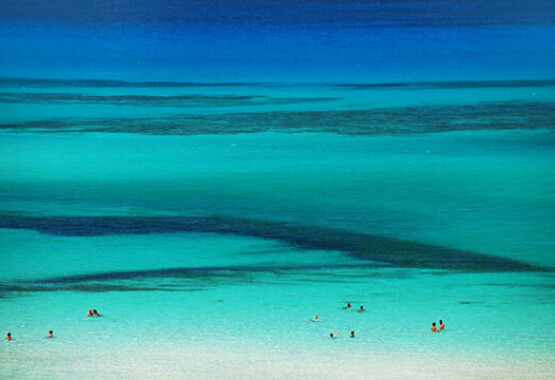
Eternal Blue
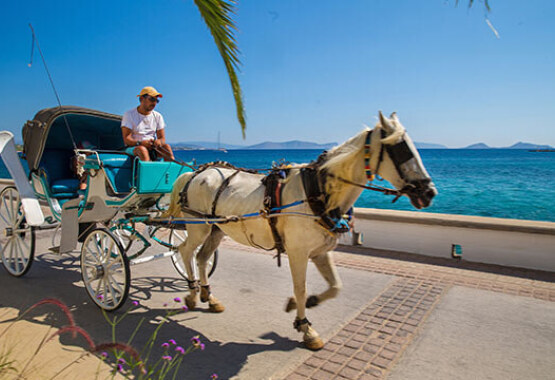
Top 10 romantic things to do in Greece

Castles
Visiting Greece is an experience where myth and tradition, history and culture play a leading role.





